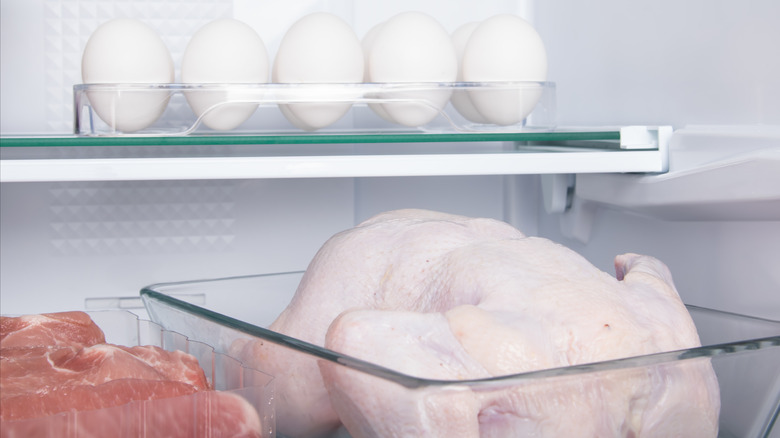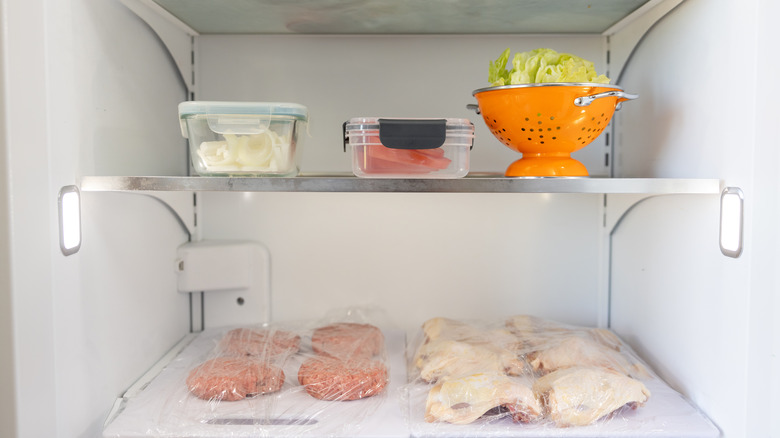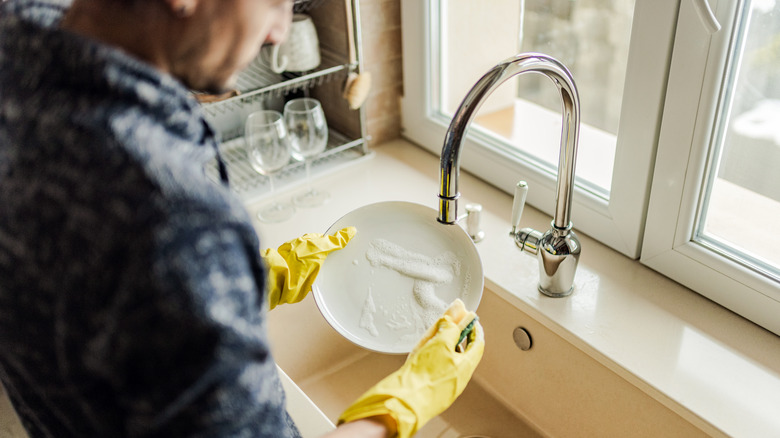The Best Spot In Your Fridge To Store Raw Chicken
Many people are afraid of ingesting raw chicken, and rightfully so. According to the CDC, raw or undercooked chicken can cause food poisoning, as it can become contaminated with bacteria like Salmonella, Campylobacter, or Clostridium perfringens. The fear of eating raw chicken is so prevalent that it has even garnered the moniker "chicken anxiety" on TikTok. It's no wonder, either. Per the CDC, it's estimated that 1 in 25 packages of chicken sold at the grocery store are contaminated with Salmonella. Food poisoning from Salmonella or other pathogens can cause diarrhea, fever, stomach cramps, nausea, and vomiting.
Eating undercooked chicken isn't the only way you might encounter a foodborne illness from the bird. You can also get sick via cross-contamination. This can happen when, for example, you touch raw chicken and spread the juices to other parts of your kitchen; or when juice from raw chicken stored in your refrigerator drips onto other food. This is why the best place to store raw chicken in your fridge is at the bottom, where it has less of a chance of contaminating other food.
Store raw chicken on the bottom shelf or drawer
It seems to be a relatively common occurrence that juice leaks out of chicken packaging — and when it does, it can ruin other food in your refrigerator. If you have your chicken stored above or on the same shelf as other items like fruit or cheese, the leaked juices can make that other food unsafe to eat. A leaking chicken package could force you to throw out a lot of the food in your fridge, especially if the chicken is stored on a high shelf. It can be hard to know exactly which foods the juices have and haven't dripped on.
That's why it's best to put raw chicken on the bottom shelf or the bottom drawer in your refrigerator. This way, if any juices leak out of the packaging, they won't drip onto food stored below. To further prevent contamination, it's also a good idea to store raw chicken in a plastic bag, container, or bowl. This will prevent any juices from dripping onto the surfaces in your refrigerator. In fact, if you can keep the bottom drawer of your refrigerator empty and designate it as your raw meat storage area, you can potentially prevent a lot of contamination.
Additional storage guidelines to prevent foodborne illness from raw chicken
Unsurprisingly, the CDC recommends storing chicken on the bottom shelf and keeping it in a closed container or wrapping it securely. After you're done storing your raw chicken, the CDC also recommends washing any dishes or surfaces that came into contact with the raw chicken using hot, soapy water. While you should still wash the dish you stored the chicken on and any shelf or drawer that may have come into contact with raw chicken juice, use a designated space at the bottom of your refrigerator to store your raw chicken — and only your raw chicken — to help prevent cross-contamination. This way, you won't accidentally place a container of fresh strawberries on top of a contaminated surface.
It's also wise to store chicken in the coldest part of the refrigerator. This is typically the bottom back because cold air sinks. The back also tends to be colder because it's further away from the warm air that enters the fridge every time the door is opened. Keep your chicken nice and cold in the bottom back of your refrigerator, and you can enjoy those wings or your favorite chicken nacho recipe while knowing you're less likely to wind up with a stomachache in a few hours.


